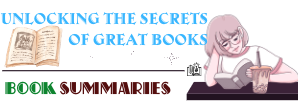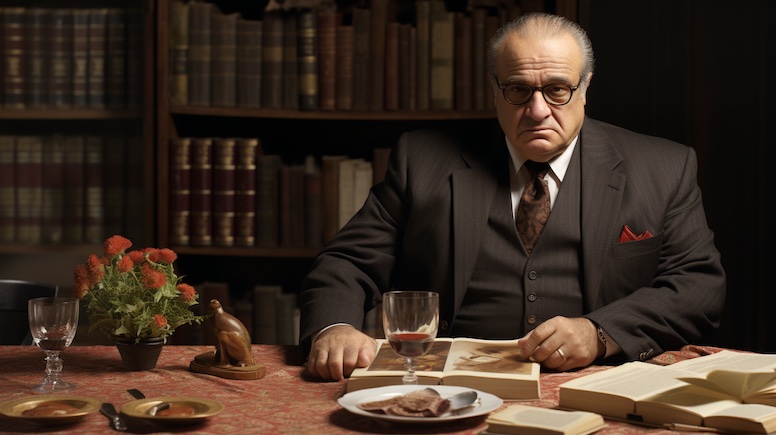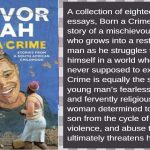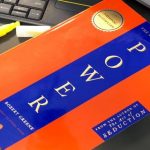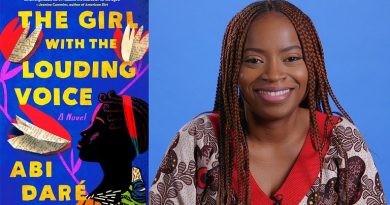Plot summary and Key themes of the book “The GodFather by Mario Puzo
“The Godfather” by Mario Puzo is a timeless classic that has captivated readers since its publication in 1969. This iconic novel tells the story of the Corleone family, an Italian-American mafia dynasty, and their rise to power amidst a world of organized crime and political corruption. Set in post-World War II New York City, the book follows the gripping tale of Don Vito Corleone and his three sons—Santino, Fredo, and Michael—as they navigate the treacherous underworld of gangsters, violence, loyalty, and betrayal.
At its core, “The Godfather” delves into themes of family dynamics, honor codes within criminal organizations, and the blurred line between morality and survival.
Overview of “The Godfather” and its author
“The Godfather” is a renowned crime novel written by Mario Puzo, published in 1969. Set in the years following World War II, the story revolves around the Corleone family and their involvement in organized crime. The book centers on Don Vito Corleone, a powerful mafia boss who heads one of New York’s most influential criminal organizations. When an attempt is made on his life, his youngest son Michael steps up to take control and protect his family.
The novel delves into several key themes that have resonated with readers over the years. One significant theme is loyalty and honor among criminals. The Corleones operate under a strict code of conduct, where respect and loyalty are highly valued within their organization. Another central theme explored in “The Godfather” is the importance of family ties. Despite being involved in illegal activities, the Corleones prioritize their blood relationships above all else.
Additionally, Puzo’s novel examines power dynamics and corruption within society. Through various characters such as Don Vito and Michael Corleone, Puzo portrays how individuals navigate political landscapes to maintain their influence and control over others. This exploration of power highlights the complex nature of human behavior and raises questions about morality and ethics.
Overall, “The Godfather,” authored by Mario Puzo, presents readers with an enthralling plot filled with intense drama while exploring themes such as loyalty, family bonds, power dynamics, and corruption within society.
Plot Summary:
“The Godfather “by Mario Puzo is a gripping crime novel that takes place in New York City during the 1940s and 1950s. The story revolves around the Corleone family, headed by Don Vito Corleone, an Italian-American mob boss. The plot primarily focuses on the transition of power within the family and their involvement in organized crime.
The book opens with Don Vito’s daughter Connie’s wedding, where various characters are introduced. The main conflict arises when rival gangster Virgil Sollozzo proposes a drug trafficking partnership to the Corleones, which they vehemently reject. This leads to a series of violent events, including an assassination attempt on Don Vito himself.
As the story unfolds, we witness Michael Corleone, Don Vito’s youngest son and initially distant from the family business, becoming deeply involved in his father’s affairs. Michael’s transformation from a war hero who wants nothing to do with organized crime into a cunning and ruthless mob boss becomes one of the key themes of the book.
Overall, The Godfather delves into themes such as loyalty, power struggles within families and organizations, honor among criminals, redemption through violence or revenge, and ultimately explores how individuals are shaped by their circumstances.
Key Themes:
“The Godfather” by Mario Puzo is a captivating novel that delves into the dark world of organized crime and the complexities of family loyalty. Set in New York City during the 1940s and 1950s, the story follows the Corleone family and their rise to power in the Mafia underworld. One key theme explored throughout the book is power and its corrupting influence on individuals. As characters like Michael Corleone are drawn deeper into a life of crime, they become consumed by their thirst for control, leading them to commit heinous acts that they once swore they would never do.
Another significant theme explored in “The Godfather” is loyalty, particularly within the context of family bonds. The Corleones prioritize familial ties above all else, emphasizing their unwavering commitment to protecting and supporting one another at any cost. This theme is most evident in Michael’s transformation from an innocent outsider to a ruthless mob boss who will stop at nothing to safeguard his loved ones. Despite being immersed in a criminal world where betrayal lurks around every corner, family loyalty remains at the forefront of this gripping tale.
1. Family loyalty and honor
In “The GodFather” by Mario Puzo, family loyalty and honor play a central role in the plot. The story revolves around the Corleone crime family and their struggles to maintain power and protect their loved ones. Throughout the novel, characters are constantly faced with difficult choices that put their loyalty to the test. Whether it is avenging a family member’s death or protecting their interests, these characters prioritize family above all else.
Another key theme related to family loyalty and honor is the importance of maintaining one’s reputation. The Corleone family prides itself on its strong reputation within both legal and criminal circles. They go to great lengths to defend not only their own honor but also that of their entire organization. This emphasis on reputation often leads characters to make sacrifices for the sake of preserving appearances and upholding tradition.
Overall, “The GodFather” explores how familial ties can influence individuals’ actions as they navigate through a world filled with violence and corruption.
2. The American Dream and success
“The Godfather” by Mario Puzo is a gripping novel that delves into the dark underbelly of organized crime. Set in the 1940s and 1950s, the story revolves around the Corleone family, an Italian-American mafia dynasty led by Vito Corleone. The book explores themes of power, loyalty, and betrayal as it follows the rise of Michael Corleone to become his father’s successor.
One key theme in “The Godfather” is the pursuit of the American Dream and its connection to success. Throughout the story, characters are driven by their desire for a better life and upward mobility. For instance, Vito Corleone immigrated to America from Sicily with nothing but ambition and determination to provide for his family. He built an empire through illegal activities but also embraced a sense of morality within this criminal world. This juxtaposition highlights how success can be achieved even outside conventional norms.
Another aspect related to success in “The Godfather” is maintaining one’s family honor while navigating dangerous situations. The book emphasizes that true success lies not only in accumulating wealth or power but also in preserving one’s reputation and legacy. Characters like Michael face moral dilemmas as they struggle between upholding traditional values and adapting to survive amidst treacherous circumstances. Ultimately, “The Godfather” explores how one’s definition of success can be shaped by personal values, cultural background, and societal expectations within the complex web of organized crime.
3. Power and corruption
In “The Godfather” by Mario Puzo, power and corruption are central themes that drive the narrative. Set in the world of organized crime, the story revolves around the Corleone family, led by patriarch Vito Corleone. As Don Corleone rises to become a powerful figure in the mafia underworld, his quest for power reveals the depths of corruption within society.
Throughout the book, various characters succumb to or exploit their positions of authority, showcasing how power can corrupt even those with good intentions. Don Corleone himself is not exempt from this corruption, as he resorts to violence and manipulation to protect his family’s empire. The juxtaposition between personal relationships and organized crime highlights how power can erode morals and values.
Furthermore, “The Godfather” explores how corrupt systems perpetuate themselves through cycles of violence and revenge. As one act of corruption leads to another, it becomes clear that power begets more power at any cost. The book also delves into the consequences of wielding unchecked authority; characters who abuse their positions face both internal moral conflicts and external threats from rival factions.
Ultimately, “The Godfather” serves as a cautionary tale about the dangers of unchecked power and its inevitable association with corruption. By portraying both the allure and destructive nature of authority within a criminal organization, Puzo sheds light on larger societal issues surrounding power dynamics and their impact on individuals’ moral compasses.
4. Violence and its consequences
In “The Godfather” by Mario Puzo, violence plays a central role in the plot and has profound consequences for the characters involved. Set in the world of organized crime, the novel explores the brutal reality of power struggles and revenge within the Corleone family. The consequences of violence are far-reaching, affecting not only those directly involved but also their loved ones and innocent bystanders.
One consequence of violence that is evident throughout the book is the erosion of trust and loyalty among family members. As power dynamics shift, betrayal becomes a common occurrence, leading to fractured relationships and a constant state of suspicion. This breakdown in trust ultimately isolates individuals within their own families, leaving them vulnerable to further violence.
Another consequence explored in “The Godfather” is the perpetuation of a vicious cycle. Violence begets more violence as characters seek revenge for past wrongs or attempt to maintain their position within the criminal underworld. The never-ending cycle of retribution creates an atmosphere where peace seems unattainable and violent acts become normalized.
Overall, “The Godfather” delves into how violence can destroy relationships, breed distrust, and perpetuate a never-ending cycle of brutality. Through its exploration of these consequences, Puzo offers readers a sobering reflection on the destructive nature of unchecked power and vengeance.
Character Analysis:
In Mario Puzo‘s “The Godfather,” the character analysis is a crucial aspect of understanding the intricate web of relationships and power dynamics within the story. One of the central characters, Don Vito Corleone, known as “The Godfather,” is portrayed as a complex figure with both admirable and ruthless qualities. He is depicted as a powerful mafia boss who values loyalty and family above all else. Don Vito’s calm demeanor and strategic thinking make him an enigmatic character who commands respect from his subordinates.
Another significant character in the novel is Michael Corleone, Don Vito’s youngest son. Michael starts off as an idealistic individual detached from his family’s criminal activities but eventually undergoes a transformation into a cold-blooded leader capable of making ruthless decisions. His journey from being an outsider to becoming an integral part of his father’s empire showcases his deep-seated loyalty towards his family.
Overall, through these character analyses, readers gain insight into the multidimensional personalities that drive the events unfolding in “The Godfather.” The contrasting traits and moral dilemmas faced by characters like Don Vito and Michael add complexity to their roles in this tale of power, honor, and betrayal.
1. Don Vito Corleone
Don Vito Corleone, the central character of Mario Puzo‘s novel “The Godfather,” is a powerful and enigmatic figure. As the head of one of New York’s most influential crime families, Don Corleone commands respect and fear from both his allies and enemies. The story revolves around his life and the challenges he faces in maintaining control over his empire amidst a changing world.
One of the key themes explored in “The Godfather” through Don Corleone is that of loyalty. Despite being involved in illegal activities, Don Corleone values loyalty above all else. He expects complete obedience from his subordinates and punishes betrayal with severe consequences. However, he also rewards loyalty generously, fostering a strong sense of family within his organization.
Another important theme associated with Don Corleone is the concept of power. Throughout the novel, we witness how he wields his power strategically to protect himself and those close to him. Despite being involved in criminal activities, Don Corleone operates within a set code of ethics that allows him to maintain control while navigating complex political landscapes.
Overall, Don Vito Corleone’s character in “The Godfather” serves as an exploration into themes such as loyalty and power within a criminal underworld. His enigmatic personality keeps readers captivated as they delve deeper into the complexities surrounding this iconic figure.
2. Michael Corleone
Michael Corleone is one of the central characters in Mario Puzo‘s novel “The Godfather.” At the beginning of the story, Michael is portrayed as a war hero and an outsider to his family’s criminal empire. However, as the plot unfolds, we witness his transformation into a ruthless and calculating mafia boss. Despite initially distancing himself from his father, Don Vito Corleone, and rejecting the world of organized crime, Michael eventually becomes deeply involved in the family business after his father is shot.
One key theme surrounding Michael’s character is his internal struggle between loyalty to his family and personal morality. Throughout the book, he grapples with conflicting emotions as he tries to balance being a good son with upholding the brutal codes of conduct that govern their criminal activities. Another significant theme related to Michael involves power dynamics within organized crime families. As he rises through the ranks and assumes control of operations previously managed by others, we see how power can corrupt even those who initially resisted its allure.
In summary, Michael Corleone undergoes a profound transformation throughout “The Godfather.” From a war hero with aspirations for legitimacy, he becomes immersed in a life of violence and deceit as he takes over his father’s role as head of the Corleone crime syndicate. The themes surrounding Michael’s character explore loyalty versus personal morality and illustrate how power can corrupt even those who resist it initially.
3. Sonny Corleone
Sonny Corleone is a central character in Mario Puzo‘s novel, “The Godfather.” Sonny, born Santino Corleone, is the eldest son of Vito Corleone, the head of a powerful Mafia family. Throughout the book, Sonny plays a significant role in driving the plot forward and representing key themes.
One of the primary aspects that define Sonny’s character is his impulsive nature. He often acts on instinct rather than careful thought, which at times leads to disastrous consequences. This impulsiveness showcases themes such as violence and power struggle within organized crime families. Sonny’s aggressive demeanor and quick temper contribute to his rise and fall within the Corleone empire.
Additionally, Sonny embodies loyalty towards his family above everything else. Despite his flaws, he fiercely protects and defends his loved ones from external threats. This demonstrates themes of loyalty, honor, and sacrifice prevalent in Italian-American culture portrayed throughout the book. Ultimately, through Sonny’s actions and decisions, readers gain insight into the complexities of power dynamics within organized crime families while exploring core notions like loyalty and violence that shape their world.
4. Tom Hagen
In the book “The Godfather” by Mario Puzo, Tom Hagen is a prominent character who serves as the consigliere to the Corleone crime family. As an adopted member of the Italian-American mafia family, Hagen’s loyalty and intelligence make him an indispensable asset to Don Vito Corleone. Throughout the novel, Hagen plays a pivotal role in advising and strategizing with the Corleones, using his legal expertise to protect their interests.
One of the key themes surrounding Tom Hagen’s character is his dual identity. Despite being Irish-German by birth, he fully immerses himself in Italian culture and embraces his role within the Corleone family. This theme explores notions of assimilation and identity within immigrant communities.
Another important aspect of Hagen’s character is his unwavering loyalty to Don Corleone. Despite facing numerous challenges and betrayals throughout the story, Hagen remains faithfully committed to protecting and serving the Corleones’ best interests. This theme highlights concepts such as honor, duty, and sacrifice within relationships and organizations.
Overall, Tom Hagen’s character in “The Godfather” brings depth to the narrative as his unique background and unwavering loyalty showcase complex themes related to identity, assimilation, loyalty, honor, and sacrifice.
Cultural Impact: Influence on popular culture
The cultural impact of “The Godfather” extends far beyond the pages of the book itself. Mario Puzo‘s novel, and its subsequent film adaptations, have had a profound influence on popular culture. The story of the Corleone crime family has become synonymous with organized crime in American media, shaping the way it is portrayed in movies, television shows, and even video games.
One key theme explored in “The Godfather” is the concept of loyalty and family honor. This idea has permeated various aspects of popular culture, with countless references to being “loyal like a Corleone” or having a “Godfather-like” figure in different contexts. The characters’ strong sense of familial duty and their unwavering commitment to each other have made them iconic figures that continue to be referenced and revered across different mediums.
Another important aspect that has influenced popular culture is the portrayal of power struggles within organized crime families. From rivalries between different factions to internal conflicts within the Corleone family itself, these dynamics have been used as plot devices in numerous films and television series over the years. The gripping narrative surrounding power plays and betrayals has captivated audiences worldwide, leading to a plethora of stories that draw inspiration from “The Godfather.
Conclusion: Significance of “The Godfather” in literature
In conclusion, “The Godfather” by Mario Puzo holds immense significance in literature. This iconic novel delves into the world of organized crime and offers a captivating portrayal of power, loyalty, and the complexities of human nature.
One key theme explored in this masterpiece is the concept of family. Puzo skillfully portrays the Corleone family as a tight-knit unit bound by love and loyalty, even in their criminal endeavors. Through their intricate relationships and unwavering support for one another, readers are exposed to a deep exploration of familial bonds that transcends conventional notions.
Furthermore, “The Godfather” also delves into the corrupting nature of power. As Don Corleone rises to become a prominent figure in the mafia world, he becomes entangled in a web of violence and deceit. Puzo uses this narrative to examine how absolute power can corrupt even the noblest individuals and explores its profound consequences on both personal relationships and society as a whole.
Overall, “The Godfather” remains an influential piece of literature that goes beyond mere storytelling. It presents complex themes that continue to resonate with readers today, highlighting the enduring significance of this remarkable novel in literary canon.
